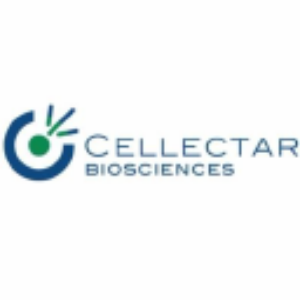Cellectar Biosciences Announces Positive Topline Data Achieving Primary Endpoint in Pivotal Clinical Study of Iopofosine I 131 in Waldenstrom’s Macroglobulinemia
- Iopofosine tested in heavily pretreated multi-class refractory population with a median of four prior therapies and achieves
75.6% Overall Response Rate;61% Major Response Rate (95% CI,44.5% ,75.8% );100% Disease Control Rate exceeding protocol statistical hurdle of20% - Median Duration of Response not yet reached with a median of 8 months follow up
- Data continues to mature, anticipate increase in response rates and duration
FLORHAM PARK, N.J., Jan. 08, 2024 (GLOBE NEWSWIRE) -- Cellectar Biosciences, Inc. (NASDAQ: CLRB), a late-stage clinical biopharmaceutical company focused on the discovery, development and commercialization of drugs for the treatment of cancer, today announced data from its CLOVER WaM pivotal study, evaluating iopofosine I 131, a potential first-in-class, targeted radiotherapy candidate for the treatment of relapsed/refractory Waldenstrom’s macroglobulinemia (WM) patients that have received at least two prior lines of therapy, including Bruton tyrosine kinase inhibitors (BTKi). CLOVER WaM is the largest study to date in relapsed or refractory WM patients post-BTKi therapy and represents the most refractory population ever tested in clinical studies based upon a review of published literature.
The CLOVER WaM study met its primary endpoint with a major response rate (MRR) of
"There is a critical need for new therapies with novel mechanisms of action to treat WM. There are no approved treatments for patients post BTKi therapy, where currently the expected response rate to salvage treatments is approximately
CLOVER WaM is a single-arm registration study with a target enrollment of 50 patients. The study is fully enrolled and topline safety data is being reported on 45 patients meeting criteria for modified intent to treat (mITT) with a data cut-off date of January 3, 2024. Topline efficacy evaluable population (41) is defined as patients who have received a total administered dose of greater than 60 mCi and had follow up of at least 60 days post last dose. Among mITT patients, median age was 71 years, median IgM level prior to treatment with iopofosine was 2,185,
Newton Guerin, International Waldenstrom’s Macroglobulinemia Foundation (IWMF) president and CEO, said, “These inspiring topline data represent important and exciting news for the entirety of the WM community battling this challenging disease. WM patients need new, clinically meaningful treatment modalities and currently, there are limited options for patients who have received prior BTKi therapy. Iopofosine’s product profile is notable because of its novel mechanism of action, fixed four-dose course of treatment completed within 75 days and the promise of an enhanced quality of life for patients, including a prolonged treatment-free interval.”
Iopofosine I 131 was well tolerated and its toxicity profile was consistent with the Company's previously reported safety data. There were no treatment-related adverse events (TRAEs) leading to discontinuation. The rates of Grade 3 or greater TRAEs observed in more than
“We are most grateful to the patients and their families, participating study sites, their staff and our dedicated employees for the successful completion of this study. Their respective contributions may provide a meaningful new treatment option for patients where there currently are no approved therapies," said James Caruso, president and CEO of Cellectar. “Iopofosine’s high major response rate and achievement of the study’s primary endpoint in highly refractory, Waldenstrom’s macroglobulinemia patients exhibits its potentially practice-changing clinical profile. We believe the currently impressive response rates and the duration of responses will continue to improve as the data matures. We plan to include these outcomes in our NDA submission and will be requesting an accelerated approval based upon our WM Fast Track Designation.”
Conference Call & Webcast Details
Cellectar management will host a conference call for investors today, January 8, 2024, beginning at 8:00 am ET / 5:00 am PT. Dial-in: 1-888-886-7786. Webcast Link: Click HERE
About Cellectar Biosciences, Inc.
Cellectar Biosciences is a late-stage clinical biopharmaceutical company focused on the discovery and development of proprietary drugs for the treatment of cancer, independently and through research and development collaborations. The company’s core objective is to leverage its proprietary Phospholipid Drug Conjugate™ (PDC) delivery platform to develop the next-generation of cancer cell-targeting treatments, delivering improved efficacy and better safety as a result of fewer off-target effects.
The company’s product pipeline includes lead asset iopofosine I 131, a small-molecule PDC designed to provide targeted delivery of iodine-131 (radioisotope), proprietary preclinical PDC chemotherapeutic programs and multiple partnered PDC assets.
For more information, please visit www.cellectar.com and www.wmclinicaltrial.com or join the conversation by liking and following us on the company’s social media channels: Twitter, LinkedIn, and Facebook.
About Waldenstrom’s Macroglobulinemia
WM is a B-cell malignancy characterized by bone marrow infiltration of clonal lymphoplasmacytic cells that produce a monoclonal immunoglobulin M (IgM) that remains incurable with available treatments. The prevalence in the US is approximately 26,000 with 1,500-1,900 patients being diagnosed annually. Approximately 10,000 patients require treatment in the relapsed or refractory setting and there are an estimated 4,300 patients requiring 3rd line or greater therapy. There are no FDA approved treatment options for patients progressing on BTKi therapy. BTKi therapies do not demonstrate complete response rates and require continuous treatment. Approximately
Forward-Looking Statement Disclaimer
This news release contains forward-looking statements. You can identify these statements by our use of words such as "may," "expect," "believe," "anticipate," "intend," "could," "estimate," "continue," "plans," or their negatives or cognates. These statements are only estimates and predictions and are subject to known and unknown risks and uncertainties that may cause actual future experience and results to differ materially from the statements made. These statements are based on our current beliefs and expectations as to such future outcomes including our expectations regarding the WM CLOVER WaM pivotal study. Drug discovery and development involve a high degree of risk. Factors that might cause such a material difference include, among others, uncertainties related to the ability to raise additional capital, uncertainties related to the disruptions at our sole source supplier of iopofosine, the ability to attract and retain partners for our technologies, the identification of lead compounds, the successful preclinical development thereof, patient enrollment and the completion of clinical studies, the FDA review process and other government regulation, our ability to maintain orphan drug designation in the United States for iopofosine, the volatile market for priority review vouchers, our pharmaceutical collaborators' ability to successfully develop and commercialize drug candidates, competition from other pharmaceutical companies, product pricing and third-party reimbursement. A complete description of risks and uncertainties related to our business is contained in our periodic reports filed with the Securities and Exchange Commission including our Form 10-K for the year ended December 31, 2022, and our Form 10-Q for the quarter ended September 30, 2023. These forward-looking statements are made only as of the date hereof, and we disclaim any obligation to update any such forward-looking statements.
Contacts
MEDIA:
Claire LaCagnina
Bliss Bio Health
315-765-1462
clacagnina@blissbiohealth.com
INVESTORS:
Chad Kolean
Chief Financial Officer
investors@cellectar.com









